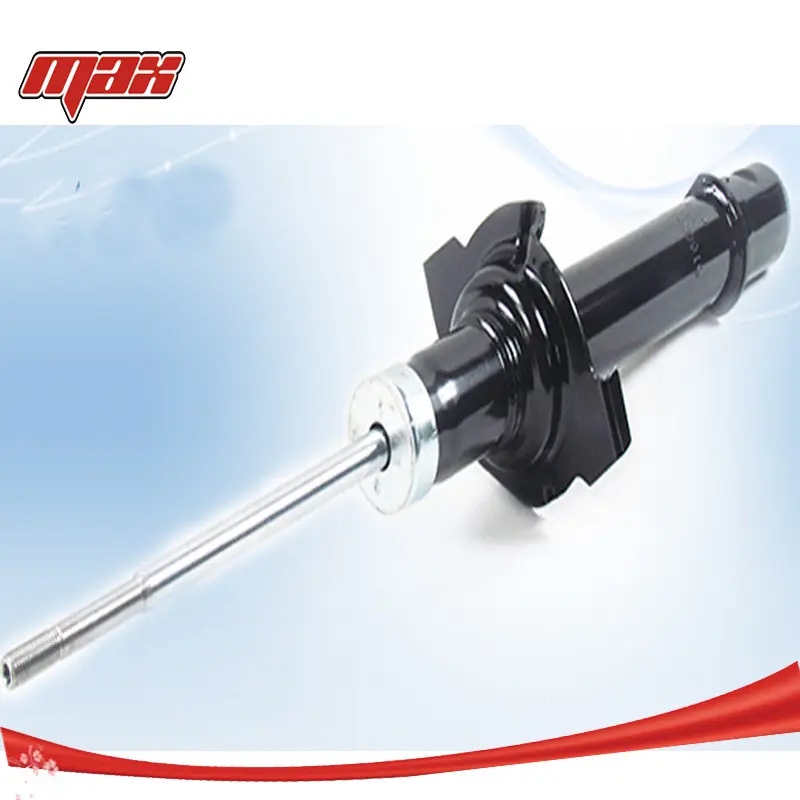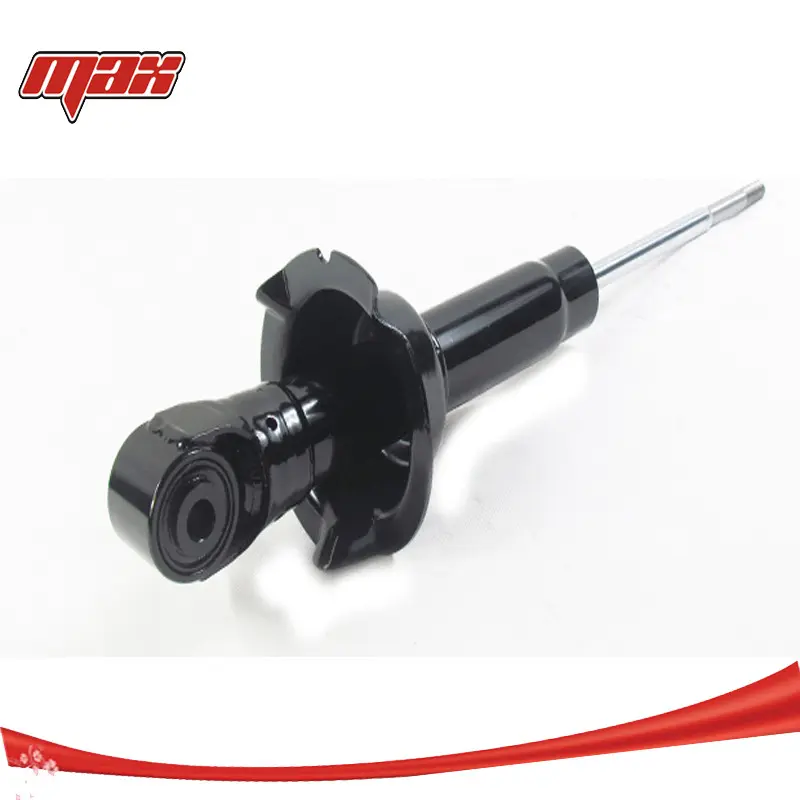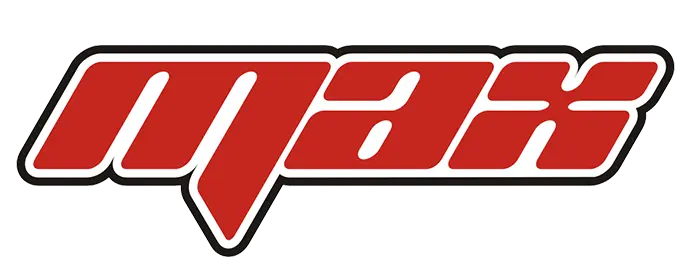
A strut rod and a shock absorber are not the same thing. It is important to know the difference for vehicle safety. Problems with steering and suspension cause about 3% of car accidents. These accidents happen because of mechanical failures. Struts help hold up the car’s weight and work with the coil spring. Shocks help take in bumps on the road. Car experts say knowing these parts helps you get better grip, longer tire life, and a smoother ride. Many people think the best shock absorbers are needed for comfort and control. This is true whether you pick a china shock absorber or another kind.
Key Takeaways
Strut rods and shock absorbers do different jobs in your car. Strut rods help keep the wheels steady. Shock absorbers help stop the car from bouncing too much.
Checking your car’s suspension often can stop big problems. Watch for too much bouncing or tires wearing unevenly to find issues early.
Learning about your car’s suspension parts makes driving safer and more comfortable. Knowing what struts and shocks do can make driving better.
Old struts and shocks can make it harder to control your car. They can also make it take longer to stop. Keeping these parts working well is important for safety.
If you hear strange sounds or your car feels weird, get help from a mechanic. Fixing problems quickly can save money and help your car work well.
Suspension System Basics and Key Parts

What Suspension Does for Your Car
The suspension in a car plays a big role in how the vehicle feels and handles. It keeps the tires in contact with the road, even when the surface is rough or bumpy. The suspension system helps the car stay steady during turns and stops. It also makes the ride more comfortable for everyone inside.
A good suspension does several important things:
Maximizes the friction between the tires and the road surface.
Provides steering stability with good handling.
Ensures the comfort of the passengers.
Supports road holding and handling.
Maintains ride quality.
Protects the vehicle and cargo from damage and wear.
Maintains consistent contact between the road wheel and the road surface.
Transmits all forces from the road through the tires.
When the suspension works well, the car feels smooth and safe. The suspension system also helps the driver keep control, even on rough roads.
Main Components: Struts, Shocks, and More
Modern vehicles use many parts in the suspension. Each part has a special job. The table below shows some of the main components and what they do:
Component | Function |
|---|---|
Springs | Absorb or dampen shocks from road friction with wheels. |
Shock Absorbers | Dampen the up and down movements caused by the springs. |
Ball Joint | Accepts lateral and horizontal loads, acting as a rotation axis. |
Stabilizer Bar | Maintains body balance when turning to reduce rollover risk. |
Lateral Control Rod | Holds the axle when a load comes from the side. |
Knuckle Arm | Connects the suspension to the wheel assembly for controlled movement. |
Upper and Lower Arms | Connect the knuckle arm with the car body for stable wheel movement. |
Strut Bar | Holds the lower arm for proper steering function of the front wheels. |
Each part of the suspension works together. The suspension system uses these parts to keep the car balanced and safe.
Why Suspension Health Matters
A healthy suspension keeps the car safe and easy to drive. Problems with the suspension can cause many issues. Fatigue damage often happens because the suspension faces tough conditions, like bad weather and heavy loads. Dirt can hurt coil springs, especially at the first coil. Rubber parts in the suspension get brittle and crack over time. Metal parts can rust, which leads to cracks. Wear between parts is hard to see but can cause failure. How someone drives and the roads they use also affect the suspension.
If the suspension is worn, the car may lose control. Braking becomes less effective, especially on wet roads. The car might skid or even flip over in strong winds or on sharp turns. Tires can lose contact with the road, making the car unsafe. The suspension system needs regular checks to keep the car running well and to protect everyone inside.
What Is a Strut Rod and How It Works
Strut Rod Function and Purpose
A strut rod helps keep a car’s suspension stable. It connects the lower control arm to the frame of the vehicle. This rod controls how much the wheel moves forward and backward when the car stops or starts. By limiting this movement, the strut rod helps keep the wheels in the right position. This makes the car easier to steer and keeps it safe on the road.
Strut rods also play a key role in keeping the wheels aligned. When the strut rod works well, the car drives straight and feels steady. Automotive engineers say that strut rods help absorb shocks and reduce vibrations. They connect the wheels to the car’s body, which helps the car move smoothly and safely. Good strut rods keep the wheels lined up and the car stable, even on rough roads.
Where to Find Strut Rods
Most cars with older suspension systems use strut rods. You can usually find them in the front suspension. The rod runs from the lower control arm to a mounting point on the car’s frame or subframe. Some trucks and classic cars also use strut rods. Newer cars may use different designs, so not every vehicle has this part.
If you look under the front of a car, you might see a long metal rod running at an angle from the wheel area toward the center of the car. This is likely the strut rod. It is often attached with bushings to help absorb movement and reduce noise.
Strut Rod Issues and Symptoms
When a strut rod wears out or breaks, the car may show several warning signs. Automotive repair professionals report these common symptoms:
Excessive bouncing or rough rides
Drifting or pulling to one side
The table below shows more signs and what they mean:
Symptoms | Description |
|---|---|
Popping sounds | You can hear popping sounds coming from under your vehicle, resembling a rock striking the bottom of your car. |
Harsh ride over small bumps | Small bumps feel large, indicating a loss of ability to cushion the ride. |
Drifting while driving | The vehicle drifts side to side when driving straight, suggesting strut or suspension issues. |
Tip: If you notice any of these symptoms, have a mechanic check your suspension. Early repairs can prevent bigger problems and keep your car safe.
Shock Absorber Role in Suspension
What Is a Shock Absorber
A shock absorber is a key part of a car’s suspension system. It helps control the movement of the springs and keeps the tires in contact with the road. Automotive engineers explain that the main job of a shock absorber is to dampen the up-and-down motion of the springs. This action improves ride quality and makes the car easier to handle. When a car drives over rough roads, the shock absorber limits how much the suspension moves. It absorbs extra energy from the springs by using oil and gas inside the unit. This process helps the car stay steady and safe.
How Shock Absorbers Work
Shock absorbers use a simple but effective design to control motion. When a car hits a bump, the shock absorber compresses. Inside, a piston moves up and down through hydraulic fluid. The fluid passes through small holes, which creates resistance and turns the movement into heat. This process slows down the motion and keeps the car from bouncing too much.
Here is how shock absorbers manage energy and control the car:
The shock absorber compresses when the car goes over a bump.
The piston inside moves through the hydraulic fluid.
The fluid flows through tiny holes, creating resistance and heat.
Shock absorbers turn the energy from bumps into heat, which then leaves the unit. This action keeps the tires on the road and helps the driver control the car. Shock absorbers also reduce body roll and sway during turns.
Tip: Shock absorbers need regular checks to work well. Clean shocks last longer and help keep the ride smooth.
Signs of Worn Shock Absorbers
Worn shock absorbers can cause many problems. Drivers may notice the car feels bouncy or hard to control. The most common signs include:
Excessive bouncing after hitting bumps.
Poor steering response or loose steering.
Uneven tire wear patterns.
Nose-diving when braking.
Leaking fluid around the shock absorber.
A rough or uncomfortable ride.
The car squats or rolls during turns or stops.
Increased stopping distance.
Steering feels loose or vibrates.
The car bounces when pushed down.
Unusual noises like clunks or bangs over bumps.
If any of these signs appear, a mechanic should check the shock absorbers. Replacing worn shock absorbers helps keep the car safe and comfortable.
Struts vs. Shock Absorbers: Key Differences

Function and Design Comparison
Struts and shock absorbers both help control how a car moves over bumps, but they do not work in the same way. Shocks mainly dampen the up-and-down motion of the car. They turn the energy from bumps into heat, which helps keep the car steady. Struts do more than just absorb bumps. They also support the weight of the vehicle and help keep the wheels aligned. This makes struts a key part of the suspension and steering system.
Automotive experts explain that shocks control the movement of the suspension by slowing down the springs. Struts combine the job of a shock absorber with extra support for the car’s structure. This means struts help hold up the car and keep it riding smoothly. Struts also play a big role in how the car steers and handles.
The design of these parts is different. Struts combine the shock absorber and spring into one unit. Shocks can work alone and do not have a spring attached. Some shocks use a twin-tube design, which gives a smoother ride because it holds more oil. Mono-tube shocks have a bigger piston and work well for short, quick movements. Mono-tube shocks can also work at different angles, which makes them good for racing. Twin-tube shocks work best when they stay upright.
Note: Struts are essential for keeping the car’s wheels in the right place and supporting the car’s weight. Shocks focus on making the ride smoother by controlling how the car bounces.
Placement and Vehicle Types
The placement of struts and shocks depends on the type of vehicle. Many cars use struts in the front suspension because they save space and add strength. Some vehicles use struts in both the front and rear. Shocks are often found in the rear suspension, especially in trucks and older cars.
Struts are common in off-road vehicles like SUVs and ATVs. Their strength and dual function make them a good choice for these vehicles.
Strut-type shock absorbers are expected to hold a 25.4% market share in 2023.
The market for automotive shocks and struts is growing. Struts have the largest share because more people want high-performance cars and SUVs.
Shocks can be found in many types of vehicles. They are often used in the rear suspension of pickup trucks, vans, and some passenger cars. Shocks are also used in vehicles that do not need the extra support that struts provide.
Vehicle Type | Common Front Suspension | Common Rear Suspension |
|---|---|---|
Passenger Cars | Struts | Shocks or Struts |
SUVs/ATVs | Struts | Shocks or Struts |
Pickup Trucks | Shocks or Struts | Shocks |
Classic Cars | Shocks | Shocks |
Impact on Ride and Handling
Both struts and shocks play a big role in how a car feels on the road. They help absorb bumps and keep the tires in contact with the ground. When these parts wear out, the car can bounce more, feel rough, and become harder to control. Worn shocks and struts can make the car roll more in turns and handle poorly on rough roads.
Shocks help control how much the car bounces after hitting a bump. They keep the ride smooth and help the driver stay in control. Struts do this too, but they also help keep the car’s wheels lined up and support the car’s weight. This makes struts very important for steering and handling.
Performance tests show that worn shocks and struts can make the ride less comfortable and even dangerous. The car may bounce, skip, or nose-dive when stopping. This can increase the stopping distance by up to 30%, even if the brakes are new. Poor shocks and struts can also cause tires to wear out faster, which means more frequent replacements.
Reduced ride comfort: Worn shocks and struts make the ride bumpier.
Decreased vehicle control: The car may not steer as well, especially in sharp turns or sudden stops.
Increased stopping distance: The car takes longer to stop, which can be unsafe.
Tire wear: Bad shocks and struts cause uneven tire wear.
Excessive bouncing: The car bounces more after bumps, especially at higher speeds.
Tip: Keeping shocks and struts in good shape helps the car ride smoothly, handle better, and stay safe on the road.
How to Identify Struts, Shocks, and Strut Rods
Visual Differences in Your Vehicle
Drivers can spot struts, shock absorbers, and strut rods by looking for certain features under the car. Struts usually appear as large, tube-shaped parts that connect the wheel assembly to the car’s body. They often have a coil spring wrapped around them. Shock absorbers look like slim cylinders and do not have a spring attached. Strut rods are long, straight metal bars that run from the lower control arm to the frame.
To help identify these parts, drivers should:
Look for signs of oil leaks or worn rubber bushings.
Check if the struts or shocks have dents or rust.
Notice if the car sits unevenly, which may point to strut or shock problems.
Listen for squeaks, clunks, or popping noises when driving over bumps.
Watch how the car handles corners and rough roads.
Tips for Checking Suspension Parts
A safe inspection of struts, shocks, and strut rods starts with the right tools. Drivers should gather a flashlight, jack, jack stands, gloves, a pry bar, and a measuring tape. The car must be parked on a flat surface before lifting it.
Steps for checking suspension parts include:
Use a flashlight to inspect struts and shocks for leaks or damage.
Measure the ride height at each corner to spot sagging struts.
Perform a bounce test by pressing down on the car’s corners. If the car bounces more than once, the struts or shocks may be worn.
Listen for noises while turning the steering wheel.
Use a pry bar to check the sway bar and strut rod connections.
Check for alignment issues, which can signal strut or strut rod problems.
Experts recommend inspecting struts and shocks at least once a year or every 12,000 miles. Regular checks help keep the suspension system healthy.
When to Seek Professional Help
If a driver notices any symptoms like excessive bouncing, uneven tire wear, or strange noises, a professional should inspect the suspension. Trained technicians can diagnose and repair struts, shocks, and strut rods safely. Attempting repairs without proper knowledge can be dangerous. Professional help ensures the car stays safe and handles well.
Tip: Annual suspension checks during tire, brake, or alignment service help catch strut and shock issues early.
Checking the suspension often helps drivers find problems early. This stops big repairs and makes accidents less likely. Looking at these parts also helps cars last longer and drive better.
Drivers who want more control and comfort can pick good parts like MAX shock absorbers. These parts make rides smoother, help tires grip the road, and let the car handle bumps easily.
FAQ
What is the main difference between a strut rod and a shock absorber?
A strut rod helps keep the wheels in place during stops and starts. A shock absorber controls how much the vehicle bounces. Both parts work together to make the vehicle safe and smooth.
Can a vehicle have both strut rods and shock absorbers?
Yes, some vehicles use both. Older vehicles often have strut rods in the front and shock absorbers in the rear. Each part helps the vehicle handle bumps and turns better.
How do I know if my vehicle needs a new strut assembly?
If the vehicle bounces too much, makes clunking noises, or feels hard to control, the strut assembly may need replacing. A worn strut assembly can make the vehicle unsafe.
Why is suspension health important for my vehicle?
Good suspension keeps the vehicle stable and safe. It helps the tires grip the road and protects the vehicle from damage. Regular checks help the vehicle last longer and ride better.
Can coilovers improve my vehicle’s ride quality?
Coilovers can help the vehicle handle bumps and turns more smoothly. They give better control over the vehicle’s height and comfort. Many drivers choose coilovers for a better driving experience.
